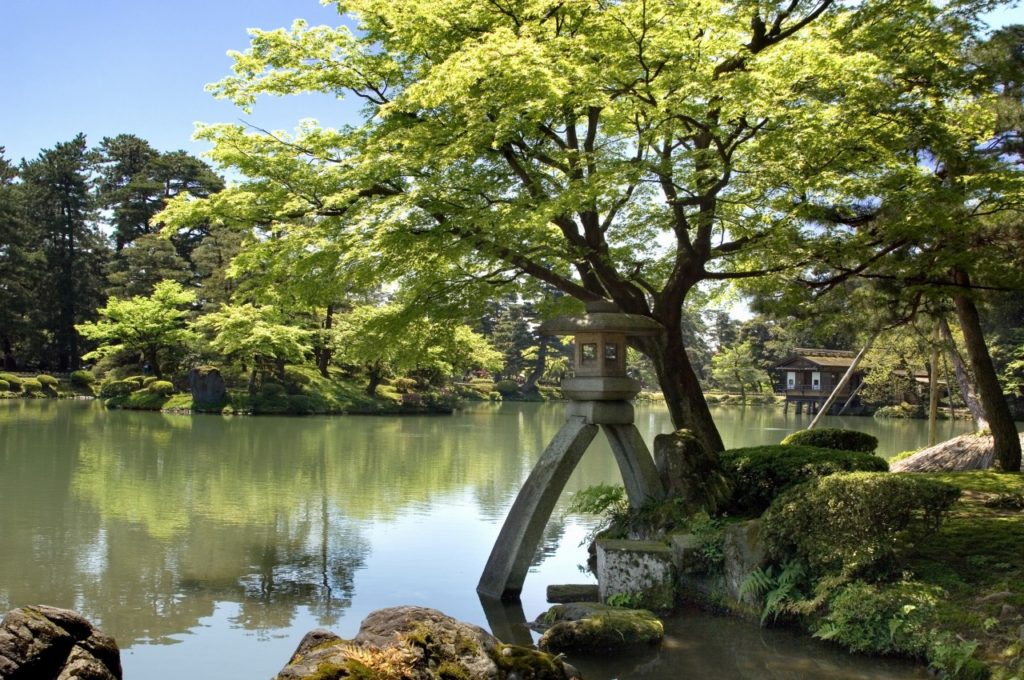Kanazawa is located in central Japan, not in the mountains but in the vast flat area called the Kanazawa Plains which face the Sea of Japan. Kanazawa’s nickname (kaga hyakuman goku) means “the town with 1 million koku of rice.” A koku was the unit of income for samurai (Japanese warriors) in the feudal period, and is about 150 kg of rice. Kanazawa has been developed as a castle town since the 17th century when the Maeda clan started to control the area.
Since the Maeda clan used to be on the opposing side from the Tokugawa, they were always watched by
the Tokugawa Shogunate. So the Maeda were careful not to do anything that would attract the suspicion of the Tokugawa Shogunate. What the Maeda did was to encourage people in Kanazawa to excel in the arts and culture.
Some good examples, which we can still appreciate today, are production of gold-leaf, porcelain, lacquer ware, tea ceremony utensils and Japanese sweets. Kanazawa also shows us samurai culture and geisha (professional female entertainers) culture. You can still see the original geisha house.
Along with Kairaku-en and Koraku-en, Kenroku-en in Kanazawa is one of the Three Great Gardens of Japan. It is open year-round during daylight hours and is famous for its beauty in all seasons. It is one of the things the Maeda clan left for the benefit of the people in Kanazawa and tourists throughout the world. It shows a different beauty each season. In winter, the park is notable for its yukitsuri — ropes attached in a conical array to carefully support tree branches in the desired arrangements, thereby protecting the trees from damage caused by heavy snows.





0件のコメント